- News
- Reviews
- Bikes
- Accessories
- Accessories - misc
- Computer mounts
- Bags
- Bar ends
- Bike bags & cases
- Bottle cages
- Bottles
- Cameras
- Car racks
- Child seats
- Computers
- Glasses
- GPS units
- Helmets
- Lights - front
- Lights - rear
- Lights - sets
- Locks
- Mirrors
- Mudguards
- Racks
- Pumps & CO2 inflators
- Puncture kits
- Reflectives
- Smart watches
- Stands and racks
- Trailers
- Clothing
- Components
- Bar tape & grips
- Bottom brackets
- Brake & gear cables
- Brake & STI levers
- Brake pads & spares
- Brakes
- Cassettes & freewheels
- Chains
- Chainsets & chainrings
- Derailleurs - front
- Derailleurs - rear
- Forks
- Gear levers & shifters
- Groupsets
- Handlebars & extensions
- Headsets
- Hubs
- Inner tubes
- Pedals
- Quick releases & skewers
- Saddles
- Seatposts
- Stems
- Wheels
- Tyres
- Health, fitness and nutrition
- Tools and workshop
- Miscellaneous
- Cross country mountain bikes
- Tubeless valves
- Buyers Guides
- Features
- Forum
- Recommends
- Podcast
£1,046.49
VERDICT:
Versatile winter trainer or commuter bike that'll easily take on the rough stuff as well as the road
Weight:
10,730g
Contact:
At road.cc every product is thoroughly tested for as long as it takes to get a proper insight into how well it works. Our reviewers are experienced cyclists that we trust to be objective. While we strive to ensure that opinions expressed are backed up by facts, reviews are by their nature an informed opinion, not a definitive verdict. We don't intentionally try to break anything (except locks) but we do try to look for weak points in any design. The overall score is not just an average of the other scores: it reflects both a product's function and value – with value determined by how a product compares with items of similar spec, quality, and price.
What the road.cc scores meanGood scores are more common than bad, because fortunately good products are more common than bad.
- Exceptional
- Excellent
- Very Good
- Good
- Quite good
- Average
- Not so good
- Poor
- Bad
- Appalling
Cross, Gravel, Road, that's what the CGR initials stand for on Ribble's latest all-rounder. A disc brake-equipped, mudguard-shod 'do a bit of everything' machine that makes a lot of sense for the rider who doesn't always want to stick to the tarmac. Thankfully, this jack of all trades is no master of none.
Ride
The CGR is a very easy bike to ride thanks to some neutral and balanced handling. This might make it sound dull but it's far from it, especially when you go off-road.
With a long wheelbase, mounts for mudguards and racks plus being designed for disc brakes, the Ribble is likely to see a lot of use in the wet and cold of winter where the road surface is often less than ideal. A bike that's dependable and trustworthy when it comes to the handling.
Over the last few weeks we've seen the temperatures drop down here in the South West and the main roads have been covered in that post-salt greasy sheen that'll happily whip your tyres out from underneath you if you aren't too careful.
Even if the Continental Ultra Sport tyres do break traction (which they often do as their winter grip isn't the best), the CGR lets you know what's happening before it's too late, as the geometry and frame materials pass plenty of information through to the rider, making things easy to correct.
This might, to some, sound a little dull – road bikes are supposed to be the thoroughbred machines of the cycling world – but while the CGR might not be the most responsive or snappy to chuck down an Alpine descent, it is bloody good at what it does, while delivering a ride that'll still keep you on your toes when the conditions are less than perfect.
If you like to chuck your bike through a twisty descent then this is probably the only place you'll find the CGR lacking, as one downhill I attacked highlighted the Ribble's weakness here.
I'd come down it a couple of times in the daylight but on a little night-time light-testing ride, I decided to push things a bit on the singletrack road. Traffic is minimal because it takes you up to an army byway, so you can afford to take a few risks, but on a tight left-hander midway down I'd never noticed the drain sitting about a foot out from the left-hand verge.
It was wet so I sat the bike up a touch to go round the outside of the drain, but at 45mph the CGR just didn't have the steering speed to bring it back into line before I ran off the road on the right-hand side. Nothing major, I touched the grass verge but manged to make it round. I even got the Strava KOM too, with an adrenaline-induced grin on my face.
It's not a major criticism of the CGR, I'm just highlighting the limits. It's not a winter bike to replicate the racing traits of your summer steed, nor is it trying to be.
The Ribble likes to cruise, it's a great mile-muncher perfect for those winter base miles. Likewise on climbing and acceleration – the Ribble doesn't excel but it delivers competent performance. I found the best way to ride it was to stay in the saddle and tap things out through the pedals.
It is stiff, though, so when you do really need to get a shift on you aren't going to be disappointed about a lack of power transfer.
Taming the terrain
We know the Ribble CGR is designed to take on various terrains but other than what I've touched on above, how does it perform specifically on each of those?
Cross: The CGR isn't as tight and nimble as a dedicated cyclo-cross bike, due to its slacker geometry and longer wheelbase, but there is no reason why you couldn't use it in anger if you wanted to dabble in the knobbly tyred world.
Part of my testing took the CGR into the woods after fitting a pair of 35mm cyclo-cross tyres, and the CGR dealt with the terrain much better than I was expecting.
The track wasn't too technical, but there was plenty of soft mud and puddles mixed in with gravel and leaves. Plenty of surface changes to push the CGR off line, especially at speed, but again you always knew where the Ribble was going to slide, so a simple tweak of steering lock was all that was needed to straighten things up as you powered on. Even for the novice off-roader (which I am) the Ribble is unbelievably easy to control.
There's plenty of clearance too, so if the conditions are particularly claggy you won't find yourself having to keep stopping to clear mud and grass out.
Smack a hidden obstacle like a covered tree root under the leaves and, again, the Ribble rarely gets so far out of shape that you can't keep the tyres in contact with the ground.
Gravel: Within two miles of my front door I have access to miles and miles of hardpack gravel tracks up on Salisbury Plain, known as the Imber Range Perimeter Path. It skirts the vast army firing range and its rock-strewn, pot-hole-covered surface can be unforgiving and punishing on your muscles.
But three to four-hour rides up there weren't an issue, even though the Ribble is very stiff, similar to that of the Wilier Jaroon in fact, but without any of the harshness.
The neutral handling I have already mentioned plays its ace card on this surface, which can be quite unpredictable at times. In terms of controllability I'd say the CGR is just as good as many of the pure adventure bikes I've ridden, especially on the sections of track where small pebbles cover the surface like glass marbles. This can make any bike skittish when you hit them at speed, but the Ribble dealt with it all admirably with a bit of body weight and steering adjustment.
Road: When I was commuting in rush hour traffic for two hours a day, a Ribble Winter Audax was my weapon of choice through the cold months and on rainy summer days too. It was easy to ride and dependable, plus it could take a knock or two. The CGR mimics all of that but gives you the added bonus of extra tyre clearance, up to 35mm with guards, and disc brakes for consistent stopping in all conditions. It's not the quickest or sharpest handling bike out there, but it is very good at what it's designed for.
It's comfortable, too, which makes it a welcome companion for those long, steady, endurance-building rides through the off-season.
As you can see, the CGR covers every base rather well.
Frame & fork
The frame itself is actually pretty simple. I don't mean that in a derogatory way at all, it's just that in a world of various bottom bracket standards, thru-axles versus quick release and all the rest, the Ribble looks like a bike you could have been riding five or ten years ago, apart from the hydraulic disc brakes on a road frame, obviously. To me this means that the CGR is a tried and tested formula.
Ribble has chosen 7005 grade aluminium for the CGR, which is used on many bike frames thanks to impressive stiffness for its weight, and its ability to take plenty of knocks and abuse – ideal for the style of riding the CGR is likely to see.
The top tube looks to have been hydroformed, with its curved shape creating a compact style frame, allowing a bit more flexible seatpost to be exposed for a little extra comfort. The front end of the tube has a larger cross sectional area where it joins the tapered head tube, a two-pronged attack at adding stiffness to help with steering and braking forces.
Ribble has kept things pretty traditional at the bottom bracket too, with a frame designed for threaded bearing cups, Shimano's Tiagra model in this case. Bottom brackets like these are easy to fit for even the novice home mechanic compared to Press-Fit options, and the threaded versions are less likely to creak once you've been riding in the wet and mud.
A lot of designers slim down the seatstays or add curves to promote some flex and comfort for the rider, but Ribble hasn't done that here at all. The seatstays are quite chunky in fact, but like I mentioned, further up the frame isn't overly harsh so gets away with it.
Up front the fork uses carbon fibre legs with an alloy steerer, and again it all works well. The carbon brings a decent level of shock absorption while being stiff enough to resist the braking forces of the discs, even from high speed. In the pictures you can see Ribble has used the upper mounts to fit the mudguards but there are also more traditional ones down by the dropouts. I say that, as the selected mudguards don't offer much in the way of protection for your feet or riders behind, and the actual fit isn't the best either.
As far as the cabling goes, it has all been left to run externally with both the gear cables and hose routing travelling underneath the down tube. It does mean the cables will get hammered by all the mud and spray if you are running without guards, so a decent cleaning and maintenance regime might be the order of the day.
It's good to see plenty of guides for the rear brake hose to be located into, both here and on the chainstay; everything is then held in place with small cable ties.
Finishing kit
Thanks to Ribble's online Bikebuilder, you can pick and choose how you want to specify your machine. The cheapest available Shimano Sora model comes in at just £799.
The model we've got here is specced with Shimano's excellent new Tiagra 4700, a groupset that is a near replica of its mid-range 105 group but without the extra gear; Tiagra is 10-speed rather than 11. Shifting is pretty much identical, with a crisp selection even under load with the Tiagra gear levers, but sadly this is lost here with the RS505 levers required for the hydraulic disc brakes. The gear changes just aren't that positive, and to be honest neither is the braking when compared with Shimano's higher level ST-RS685s that I was using on another test bike at the same time.
I'm a big fan of the ST-RS685 levers and Shimano's Ice-Tec rotors as a complete setup; it's something I've run on my own bikes with excellent results. The braking is solid, predictable and very powerful, which you can have real confidence in at any speed or weather conditions. The setup on the CGR uses the same callipers but a different Shimano rotor: a 160mm front and back, whereas with the setup I've just mentioned I was always more than happy with 140mm. The CGR build doesn't have the bite or feedback through the lever, and a few times I was caught out as the Ribble just didn't slow or stop as quickly as I was expecting.
It's hard to pinpoint exactly what causes the difference, but the slightly less direct feel at the lever could be down to some flex somewhere. The braking isn't bad – it's much better in the wet or off-road than a dual-pivot calliper – it's just disappointing compared with the slightly more expensive levers.
The groupset specced does give a decent spread of gear ratios for on and off road, with a 34/50 chainset and 11-32 cassette. When things are slippery off road it's great to have the extra teeth on the cassette to remain seated and get weight over the rear wheel compared with a more road standard 28 or 25-tooth largest sprocket.
Our CGR also has an upgraded stem from the standard selection to a Deda Zero 2. The Deda stuff is decent finishing kit too, and brings a top end look to the overall bike. The whole build comes in at £1,046.49 at the time of writing but prices do seem to fluctuate on the website.
Wheels and tyres
Shimano also provides the wheels – its RX010 hoops are as strong as an ox. I literally smashed these off-road into pot-holes, tree roots and sharp rock edges and they didn't budge a millimetre. They are as solid as they come.
They also saw one hell of a lot of mud, grit and water without any issues in the hub department. I purposely didn't clean the bike over the test period to accelerate wear and tear on all parts, and there hasn't been the slightest grumble.
Tyre-wise, the CGR's 25mm Continental Ultra Sports are decent enough entry-level rubber, in a wire-rimmed setup. They staved off punctures throughout this hedge-cutting test period with ease, and are surprisingly quick rolling.
The only downside is their grip isn't the best, especially when the roads are damp or wet. It's mostly down to a mix of how hard the rubber compound is and the low thread count in the carcass, which makes for quite an inflexible tyre. Something more supple would adapt to the road surface better, adding grip.
Value
Using Ribble's online Bikebuilder means you can spec the CGR exactly as you want depending on your needs and budget. You can upgrade the wheels, for instance, and down-spec on the gearing, giving loads of flexibility. The price changes instantly as you make the tweaks, so you can play about with various builds before clicking to buy.
As I've said, the cheapest model is a Shimano Sora build which comes in at £799.99, while a Tiagra model with mechanical disc brakes is £975, putting it squarely in competition with the alloy GT Grade at £949.99 with a very similar build (we've been big fans of the carbon model).
> road.cc Adventure and Cyclocross Bike of the Year 2016-17
Other similarly priced bikes we've tested in this genre are the Norco Search and Raleigh's Mustang, which show how 'in the ball park' the CGR is with its competitive pricing and kit levels.
The Ribble, though, is aimed primarily at the road, where it is very adept, and if you were never to show it a muddy trail you wouldn't be disappointed – it makes an excellent winter trainer. The added value comes from just how good it is off road. It hasn't just had a few tweaks to make it fit with current trends, the CGR really does work across the board. Unless you specifically want to race cyclo-cross at a high level, the Ribble is giving you practically three bikes in one, living up to its name well.
Verdict
Versatile winter trainer or commuter bike that'll easily take on the rough stuff as well as the road
road.cc test report
Make and model: Ribble CGR
Size tested: 55cm
About the bike
State the frame and fork material and method of construction. List the components used to build up the bike.
The CGR is based around a 7005 alloy frame and carbon fork with the full build completed using Ribble's Bikebuilder.
Chainset - Tiagra 4700 172.5 34/50
Bottom Bracket - BB-RS500 BB Cups (Tiagra 4700)
Rear Derailleur - Tiagra 4700 Medium Cage
Cassette - 11-32
Front Derailleur - Tiagra 4700 10 Double Front Gear Braze-On
Chain - HG54 4700/Deore/SLX HGX Chain - 10 Speed
Disc Rotors - Dirt Dissipation 6 Bolt Disc Brake Rotor 160mm
Shifters - RS505 STI / Hydraulic Disc Brake Set w/RS785 Calipers
Wheelset - Shimano RX010 Centre Lock Disc Wheelset
Tyres - Continental Ultra Sport 2 Rigid Tyre, 700x25mm
Handlebar Tape - Deda Cork Ribbon
Handlebars - Deda Zero
Handlebar Stem - Deda Zero 2 Stem
Seatpost - CSN Superleggera Carbon/Alloy 27.2 350mm
Saddle - Selle Italia X1 Flow Saddle
Mudguards - Zefal Narrow Guards
Tell us what the bike is for, and who it's aimed at. What do the manufacturers say about it? How does that compare to your own feelings about the bike?
Ribble says: "You might be just starting out on your cycling journey or perhaps looking to rationalise your bikes with an all-rounder – the CGR excels at everything from winter training or commuting duties right through to summer adventures or long-distance touring.
A light 7005 aluminium frame is coupled with a carbon fibre fork on the CGR. Disc brakes provide powerful and consistent braking that is superior to conventional rim brakes. If you're new to discs, you'll be amazed at the lever modulation (feel) and consistent power in all weather conditions.
For most people their bike purchases are carefully considered. It's a significant investment and that's why versatility and value for money often become major considerations. No one wants a bike that sits unused - taking up valuable space - a bike that's not 'pulling its weight.'
Versatility and practicality are at the core of the cleverly designed CGR - this is a bike that will not sit idle for very long. With the advantage of disc brakes, a carbon fork, mudguard mounts and pannier carrying capability this bike just ticks so many boxes.
The all-round practicality of the CGR does not prevent it from being a nimble and enjoyable ride and as the bike's designer says: 'We wanted a bike that was comfortable enough to ride every day, efficient enough to ride all day and even agile enough to take off road.'
If you are looking for one bike for that can do-it-all - the CGR is for you. There are no limitations with this bike only new horizons to explore."
I reckon the CGR is a solid all-rounder which allows you to have a bike that'll work competently on varied terrain for an impressive price.
Frame and fork
Overall rating for frame and fork
8/10
Tell us about the build quality and finish of the frame and fork?
The CGR is well finished and will withstand a lot of abuse.
Tell us about the materials used in the frame and fork?
The frame is manufactured from 7005 grade aluminium with the fork being a mix of carbon fibre legs and a steerer made from alloy.
Tell us about the geometry of the frame and fork?
For a bike of this type, winter trainer, gravel bike, it is actually quite long and low with a 550mm top tube, 145mm head tube on this 52cm model.
How was the bike in terms of height and reach? How did it compare to other bikes of the same stated size?
As above, geometry details here - www.ribblecycles.co.uk/ribble-cgr/
Riding the bike
Was the bike comfortable to ride? Tell us how you felt about the ride quality.
Yes, it is a stiff frameset but just manages to stay the soft side of harsh.
Did the bike feel stiff in the right places? Did any part of the bike feel too stiff or too flexible?
Yes, stiffness isn't something the CGR lacks.
How did the bike transfer power? Did it feel efficient?
Impressively so.
Was there any toe-clip overlap with the front wheel? If so, was it a problem?
No.
How would you describe the steering? Was it lively, neutral or unresponsive? Neutral.
Tell us some more about the handling. How did the bike feel overall? Did it do particular things well or badly?
The steering is slower than a race bike, but that means it works well off road and is especially helpful on wet, greasy winter tarmac.
Which components had the most effect (good or bad) on the bike's comfort? would you recommend any changes?
The saddle was pretty good for long rides, and even though the CGR is a stiff bike it doesn't feel uncomfortable.
Which components had the most effect (good or bad) on the bike's stiffness? would you recommend any changes?
The Deda bar and stem combo is certainly stiff enough for off-road use.
Which components had the most effect (good or bad) on the bike's efficiency? would you recommend any changes?
A wider range 11-32 tooth cassette than you find on most road bikes gives you a slightly larger spread of gears, which means you can stay seated more often while climbing.
Rate the bike for efficiency of power transfer:
8/10
Rate the bike for acceleration:
7/10
Rate the bike for sprinting:
7/10
Rate the bike for high speed stability:
8/10
Rate the bike for cruising speed stability:
8/10
Rate the bike for low speed stability:
8/10
Rate the bike for flat cornering:
8/10
Rate the bike for cornering on descents:
8/10
Rate the bike for climbing:
7/10
The drivetrain
Rate the drivetrain for performance:
7/10
Rate the drivetrain for durability:
8/10
Rate the drivetrain for weight:
7/10
Rate the drivetrain for value:
7/10
Tell us some more about the drivetrain. Anything you particularly did or didn't like? Any components which didn't work well together?
The latest version of Shimano Tiagra has the feel of 105 but with one less gear, which means you get great shifting and it looks smart too. I'm not a massive fan of the shifters used on the CGR, though; considering they are 105 level, the gear changes are nowhere near as crisp.
Wheels and tyres
Rate the wheels for performance:
8/10
Rate the wheels for durability:
9/10
Rate the wheels for weight:
7/10
Rate the wheels for comfort:
8/10
Rate the wheels for value:
8/10
Tell us some more about the wheels.Did they work well in the conditions you encountered? Would you change the wheels? If so, what for?
The Shimano wheels took an absolute kicking on the rough gravel tracks of Salisbury Plain without the slightest of issues.
Rate the tyres for performance:
7/10
Rate the tyres for durability:
8/10
Rate the tyres for weight:
7/10
Rate the tyres for comfort:
7/10
Rate the tyres for value:
7/10
Tell us some more about the tyres. Did they work well in the conditions you encountered? Would you change the tyres? If so, what for?
The Continental Ultra Sport tyres are decent enough entry-level models and are pretty robust, but grip on cold, wet tarmac can be sketchy.
Controls
Rate the controls for performance:
8/10
Rate the controls for durability:
8/10
Rate the controls for weight:
8/10
Rate the controls for comfort:
8/10
Rate the controls for value:
8/10
Tell us some more about the controls. Any particularly good or bad components? How would the controls work for larger or smaller riders?
Deda's entry-level kit is hard to knock for the price and it always brings a classy look to any bike. The RHM bar offers plenty of hand positions plus the compact drops suit most people.
Your summary
Did you enjoy riding the bike? Yes
Would you consider buying the bike? Yes, especially if I was a commuter.
Would you recommend the bike to a friend? Yes
Rate the bike overall for performance:
8/10
Rate the bike overall for value:
7/10
Use this box to explain your score
The Ribble CGR is one of those bikes that you need in your collection or that could replace most of your collection, a workhorse that'll cover the miles in crappy conditions without beating you up. You always feel in control too thanks to that well-balanced handling whatever the terrain.
About the tester
Age: 38
I usually ride: This month's test bike My best bike is: Kinesis Aithien
I've been riding for: 10-20 years I ride: Every day I would class myself as: Expert
I regularly do the following types of riding: time trialling, commuting, club rides, sportives, fixed/singlespeed
Since writing his first bike review for road.cc back in early 2009 senior product reviewer Stu has tested more than a thousand pieces of kit, and hundreds of bikes.
With an HND in mechanical engineering and previous roles as a CNC programmer/machinist, draughtsman and development engineer (working in new product design) Stu understands what it takes to bring a product to market. A mix of that knowledge combined with his love of road and gravel cycling puts him in the ideal position to put the latest kit through its paces.
He first made the switch to road cycling in 1999, primarily for fitness, but it didn’t take long for his competitive side to take over which led to around ten years as a time triallist and some pretty decent results. These days though riding is more about escapism, keeping the weight off and just enjoying the fact that he gets to ride the latest technology as part of his day job.
Latest Comments
- jarpots 6 sec ago
Nice product but has limitations, like most. Particularly if you use heavy electric bikes.
- AidanR 30 min 59 sec ago
Not sure why they don't take a cue from elsewhere in Belfast and paint the kerb stones.
- Rendel Harris 1 hour 5 min ago
Provided it's not a complex fracture he should be able to train in three weeks and race in six, shouldn't be much of a problem to make the Vuelta...
- NickJP 1 hour 45 min ago
I like the Daysaver multitools: https://daysaver.fun/.
- wtjs 2 hours 24 min ago
Whereas I would be surprised if the police ever took any action over a road traffic offence- except those they punish because they don't like the...
- wtjs 2 hours 29 min ago
All the manufacturers are non-American!
- chrisonabike 2 hours 45 min ago
Yes... and they're a *bit* insulated from the "must grab attention" imperative...
- stevez123 2 hours 45 min ago
I wish my tires were as easy to mount on the rim as yours. I usually end up with blisters on my thumbs after repairing a flat. Next time use a tire...
- David W 2 hours 3 min ago
This tragic case just makes me more concerned about the attitudes of some drivers now. Just last week, while cycling home from work (at about...
- Destroyer666 6 hours 37 min ago
In the eyes of an idiot like you? No worries.






































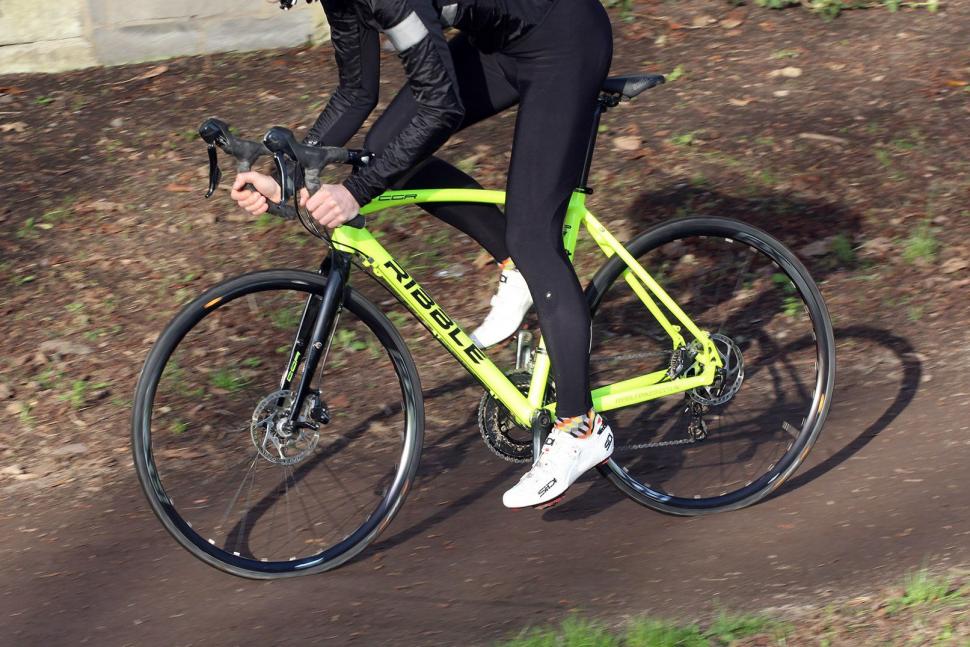
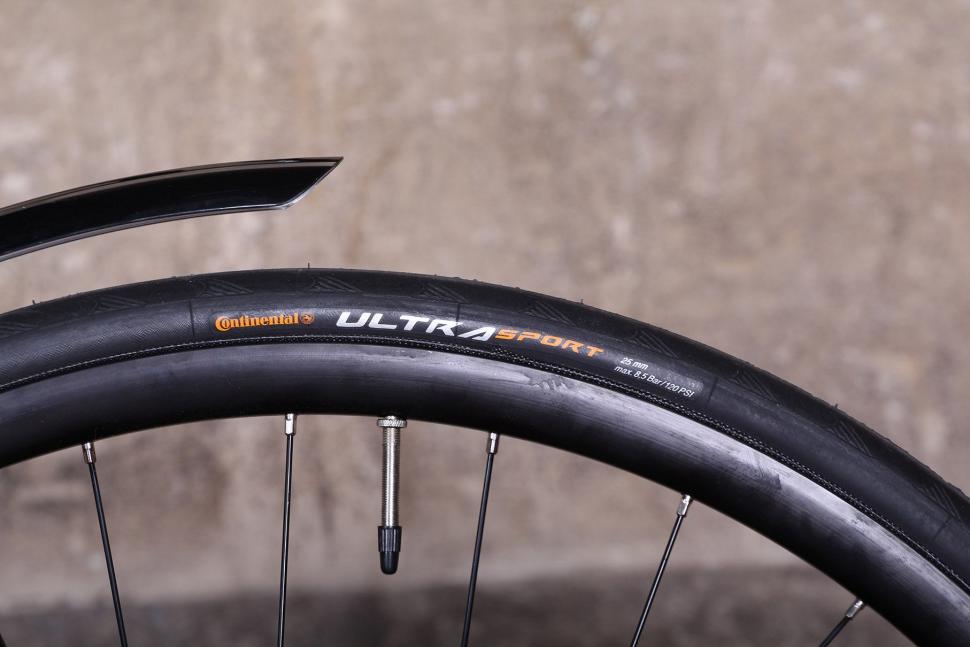

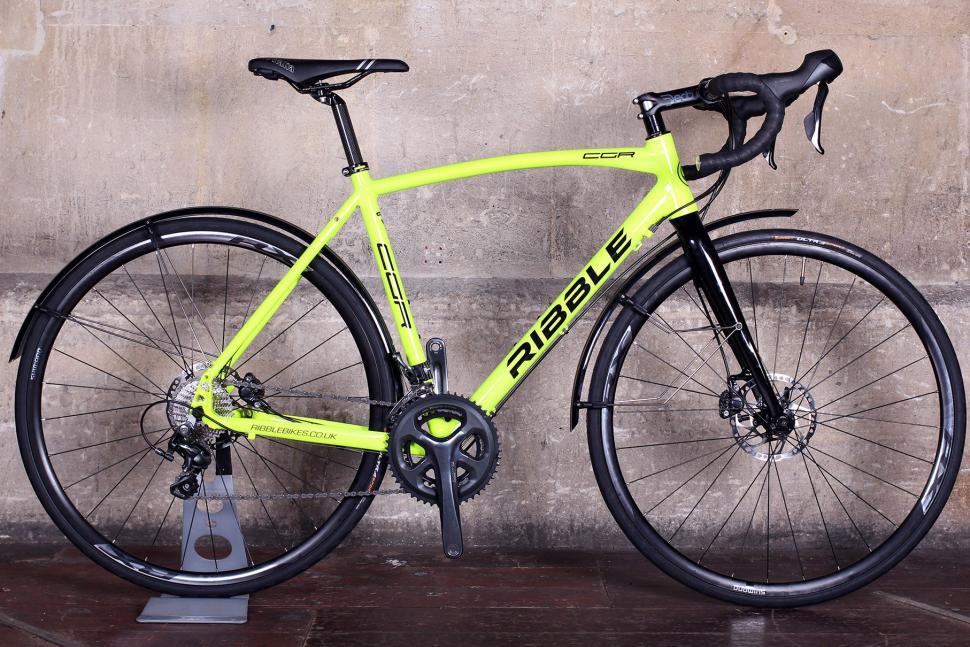

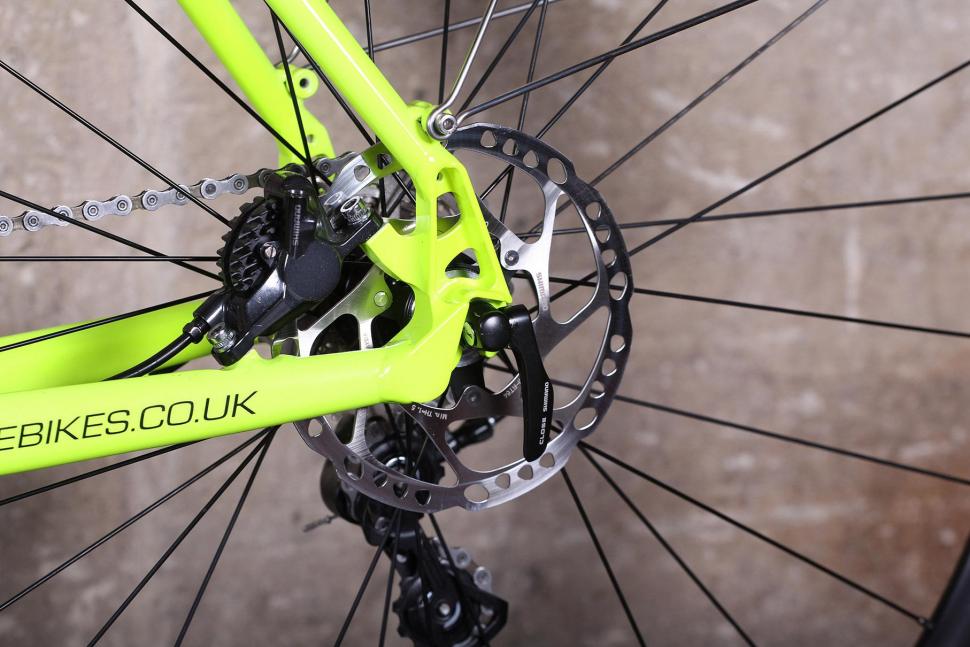


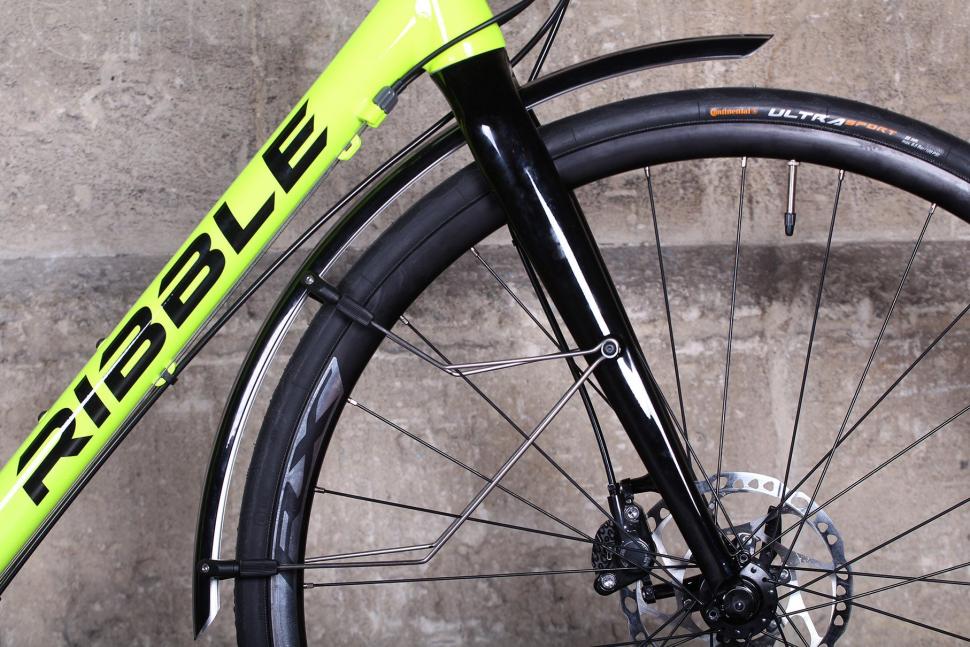
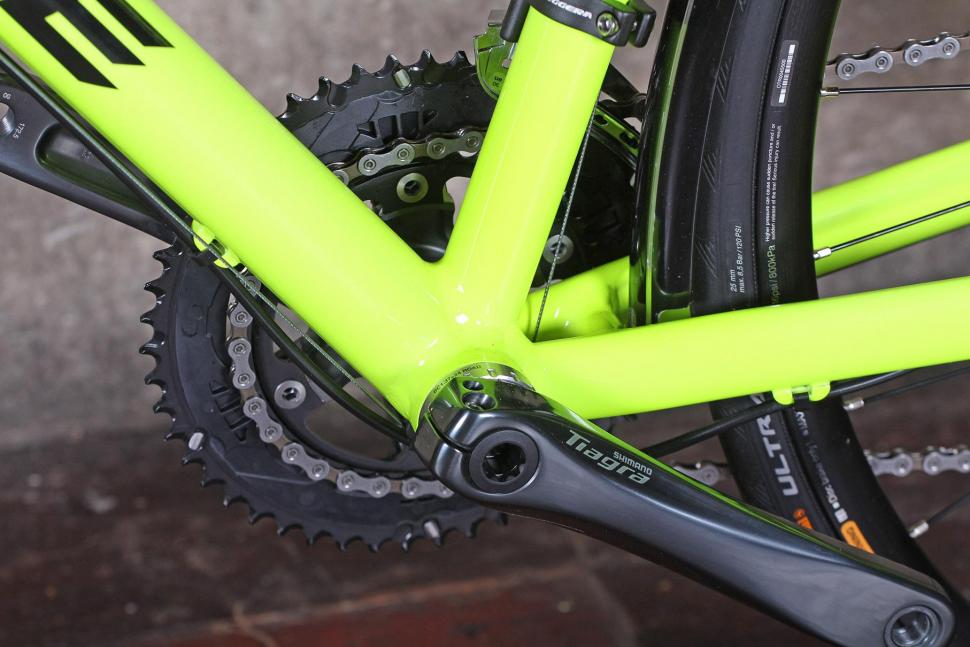


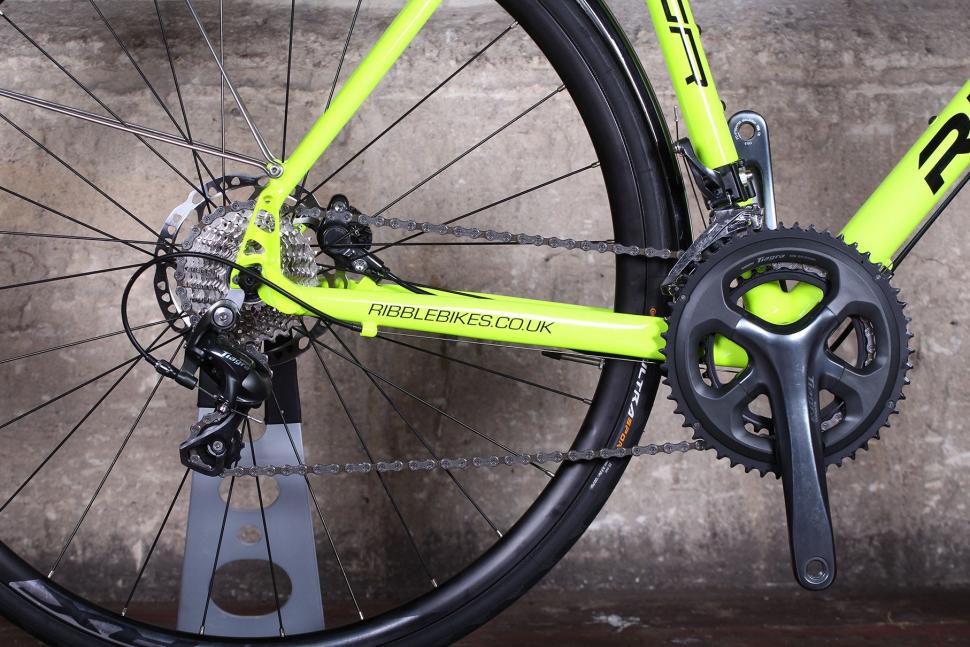
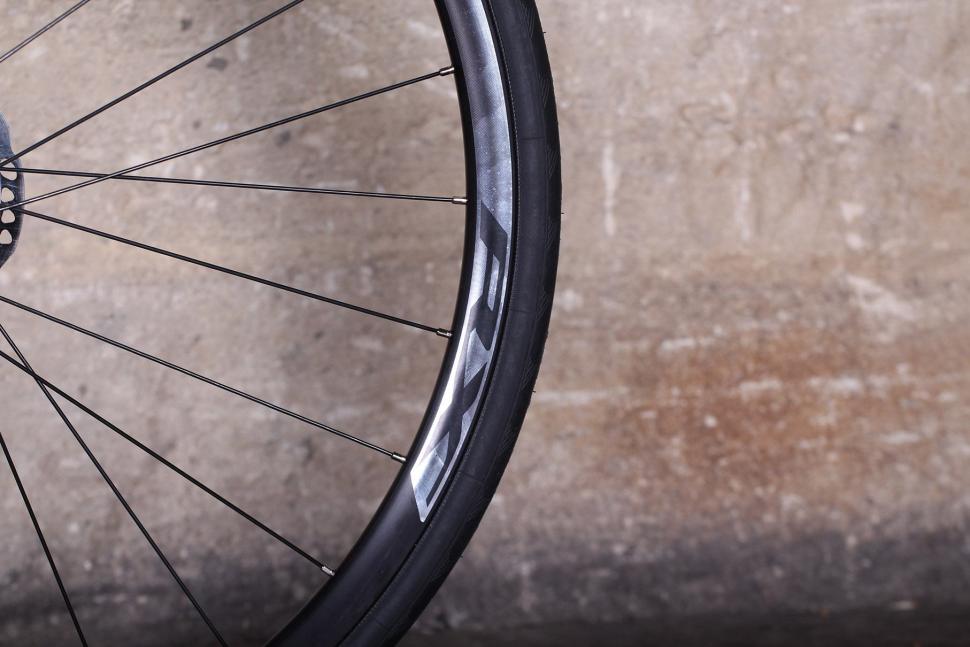




Add new comment
15 comments
Every time I look at this bike both here and on the Ribble website I can't get over what an utter ballsup they've made of the mudguard fitting. Gives guards a bad name
Winter bike: a UK term for a second bike with 'guards, often a steel frame, Gatorskin rubber and high-spoke wheels, cheaper/sturdier components etc. for wet-weather training in the winter months, thereby keeping the miles and wear off the 'best' bike.
WRT your riding in Sydney, are you really going to be doing enough wet miles to justify a disc-braked bike? I'm currently in NSW and the riding seems bloody hilly but dry, so any road bike that fits and has a good spread of gears would be my choice. 50/34 and 12-30 Sora or Claris would be fine.
Can someone enlighten me as to what a 'winter bike' is? It can get a little chilly in Sydney in winter, never below zero and it doesn't snow. I only need one bike, not two, and this one looks like a good'un. Thanks.
I've been looking to upgrade my every day communting bike (20miles, with 130m acesnt), that can take panniers and mudgaurds. I want something that isn't too bad up hills, 80% road riding, but that I can to onto some gravel paths/single track at the weekend. With a budget up to £1,250. This bike fulfils most of my needs so seriously considering.
If this had internal cable routing and through axels (possibly a different paint scheme) I'd have put my money down. Also not too sure about Ribble as a brand?
Otherwise I'm considering:
Would appreciate any recommendations or opinions on the matter!?
Cheers
What a MACHINE! This is a bike for riding fast and also for riding excitignly.
Ruddy hell I am pumped about this bike AND congratulartions on the strave KOM to. That is because its "unbelievable easy to control"! I beleive you dont worry!
Really am sorry to hear about the prob with the steering speed though. Is it a prob to get round normal corners or only down STEEP hill?
Can someone clarify the shifters on this? It's a 10 speed tiagra group but you've listed RS505 levers which are 11 speed aren't they?
Interested to know whether this is a mistake and these are actually the releatively new RS405 Tiagra level hydro brakes and if they're worth getting instead of spending even more upgrading to 105 level hyrdaulics. Haven't seen anyone using the tiagra level hydro shifters yet.
Looks to be a 10 speed cog so I'd say, yes, these are RS405 which are, essentially, 10 speed R505.
Is there a bike in the world that I could get back on track after standing it up mid corner at 45mph in the wet on a single track road?
I've got one at the moment (in 105) - it looks brilliant in the flesh (and certainly makes you stand out without having to don a hi-vis jacket).
Only downsides are the tyres, as mentioned (personally I think they should have specced bigger 28mm tyres for all-round use, anyway), the wheels are a little on the heavy side making this a bit slow at steep climbs (despite the generous range of gears) and it's quite long, though it just needs a shorter stem to sort that.
Really smooth and sprightly on straights though, and comfy too; quite an enjoyable ride. 105 stuff is magical, btw - I wouldn't even bother with Ultegra now.
Why spec 25mm tyres with dodgy grip on what's most likely to be used as a winter bike.
Green is the new black.
I saw one of those green Planet X London Road bikes the other day and it looked quite tasty IRL, more so than on the website.
Great to see such an in-depth review on the CGR. I've been mulling over the idea of getting one as a winter bike and spare CX bike. Heard it was quite heavy, but I think this has swayed me back into favouring one. Mudguards come on/off easily enough I take it?
Mudguard fitment/removal is a quick and easy job, you just need to drop the wheels out.
I'm not sure I'd descend that road (if it's the one I think it is coming back in to Warminster) in the dry at 45mph.
You've bigger cohonies than I.
The descent in question is Imber Road dropping down into the middle of Bratton although whichever way I plummet down from the ridge is always a giggle